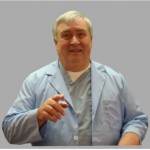
There is an entire field of science devoted to understanding how students best learn from watching screens. I believe in that science.
For over 20 years, the Brookside Associates has produced and distributed medical education materials for use by physicians, nurses, other medical personnel and students preparing for these professions.
21st Century Medical Education should be effective and efficient.
Almost all of our products are freely available online for downloading and use in the furthering of medical education.
Product Categories:
Medical and Nursing Training Videos
